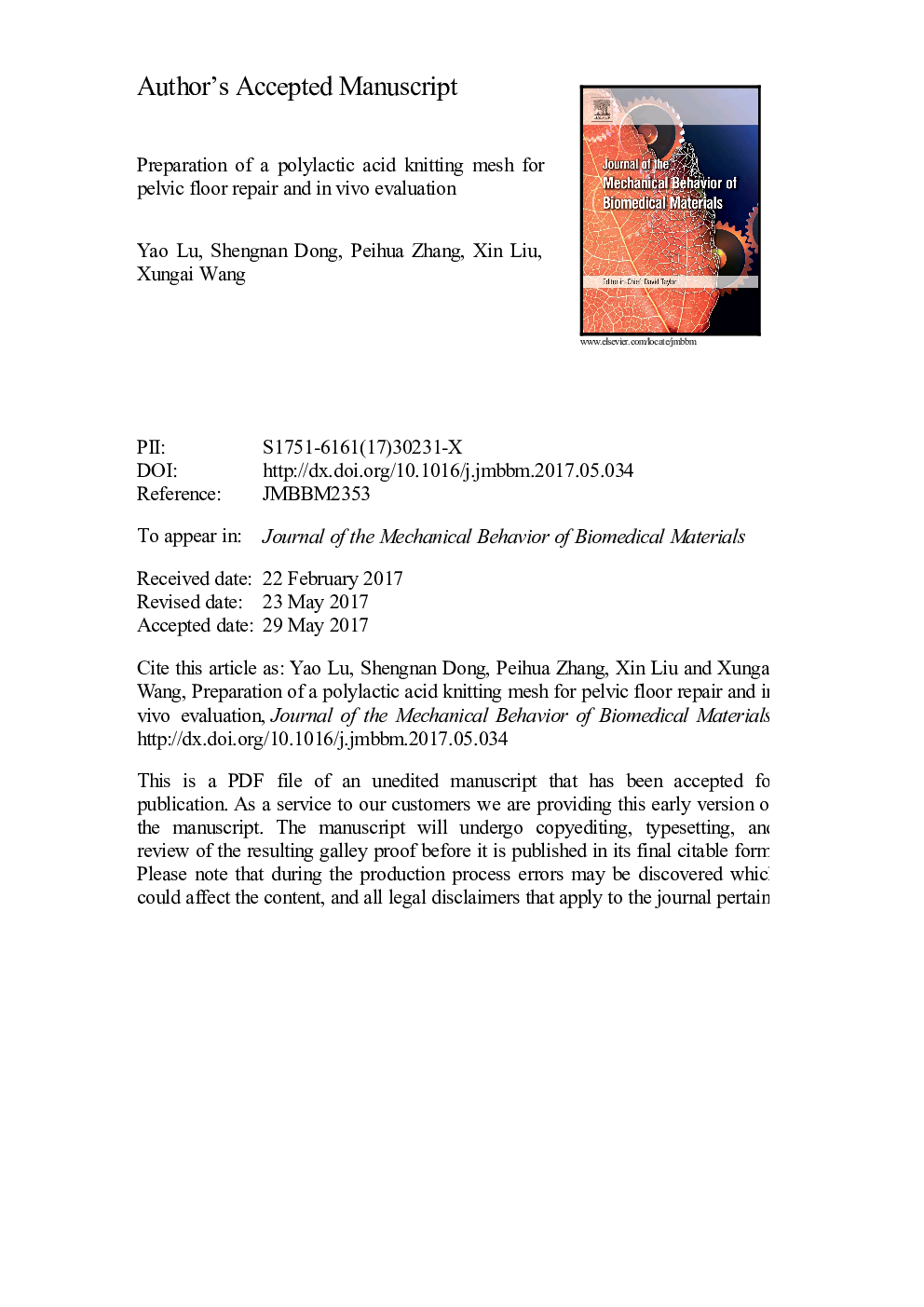| Article ID | Journal | Published Year | Pages | File Type |
|---|---|---|---|---|
| 5020411 | Journal of the Mechanical Behavior of Biomedical Materials | 2017 | 27 Pages |
Abstract
The health warning report by the Food and Drug Administration (FDA) in 2011 has drawn attention to the need for developing a suitable bio-scaffold for repairing female pelvic from disease. This work prepared a pure polylactic acid knitting mesh (PPA) and compared its structure and properties with a commercial mesh - Surgimesh® Prolapse (SP; Aspide Medical, France). Mechanical tests showed that the PPA mesh was stronger than SP with higher breaking strength and bursting strength. The in vivo property of PPA was evaluated with an animal model. Both PPA-tissue and SP-tissue were tested to have lower strength and initial elastic modulus; tissue layer played a vital role in the bio-mechanics, especially after 3 months of implantation. New tissues on the surface of PPA grew faster and thicker than that on SP at each observation period. The final shrinkage rate of PPA (2.13 ± 0.41%) was much lower than that of SP (30.35 ± 1.7%). Obvious adhesion phenomenon was observed on both PPA and SP meshes at each test point. Two meshes showed different adhesion level, that PPA was assessed of severe adhesion, even causing host tissue rupture. By histological evaluation, both PPA and SP groups showed obvious tissue inflammation reaction evidenced by rich lymphocytes. However the surrounding tissues on the PPA recovered better, with higher inflammation response scores and presence of significant vascularization and adipogenesis after six months of implantation.
Related Topics
Physical Sciences and Engineering
Engineering
Biomedical Engineering
Authors
Yao Lu, Shengnan Dong, Peihua Zhang, Xin Liu, Xungai Wang,
